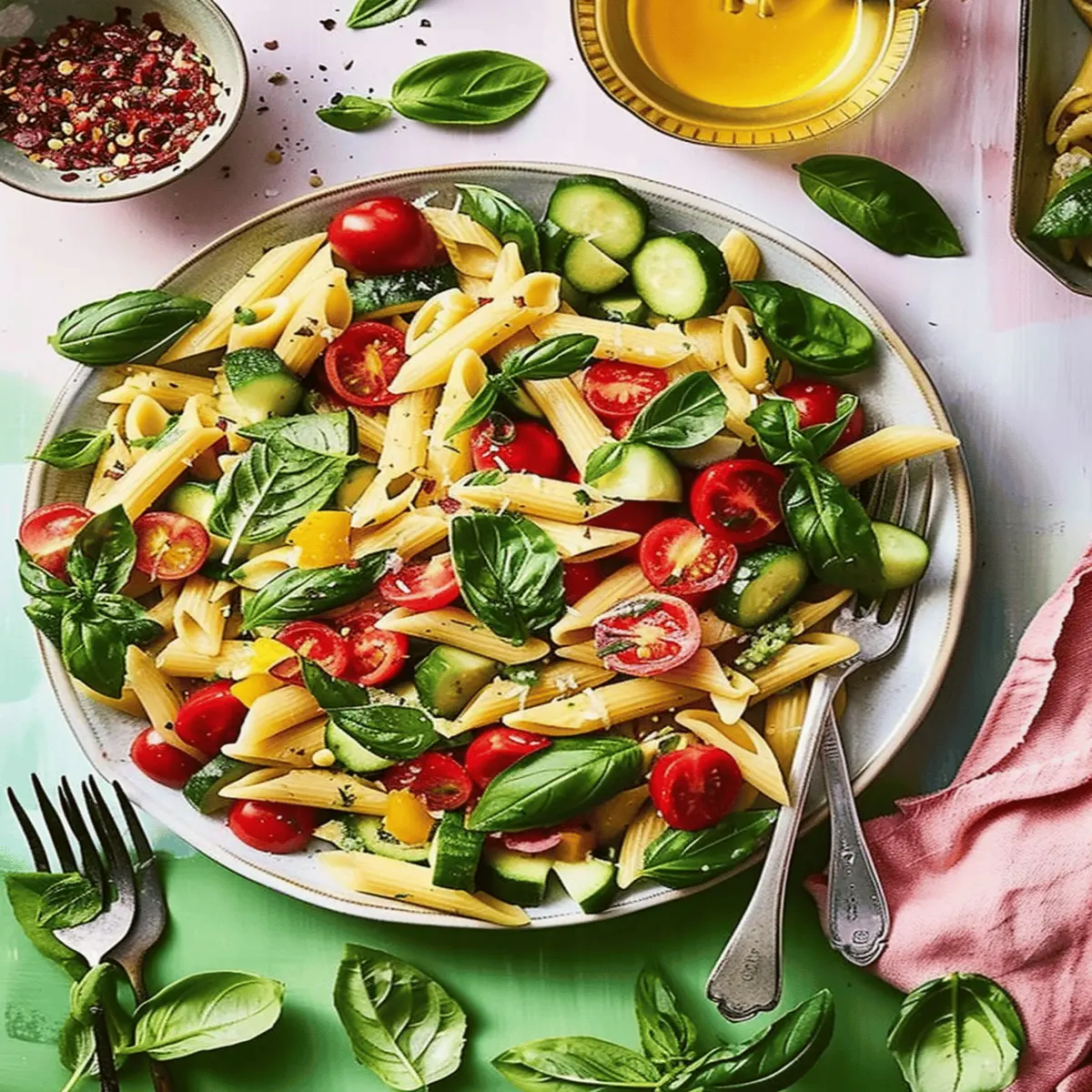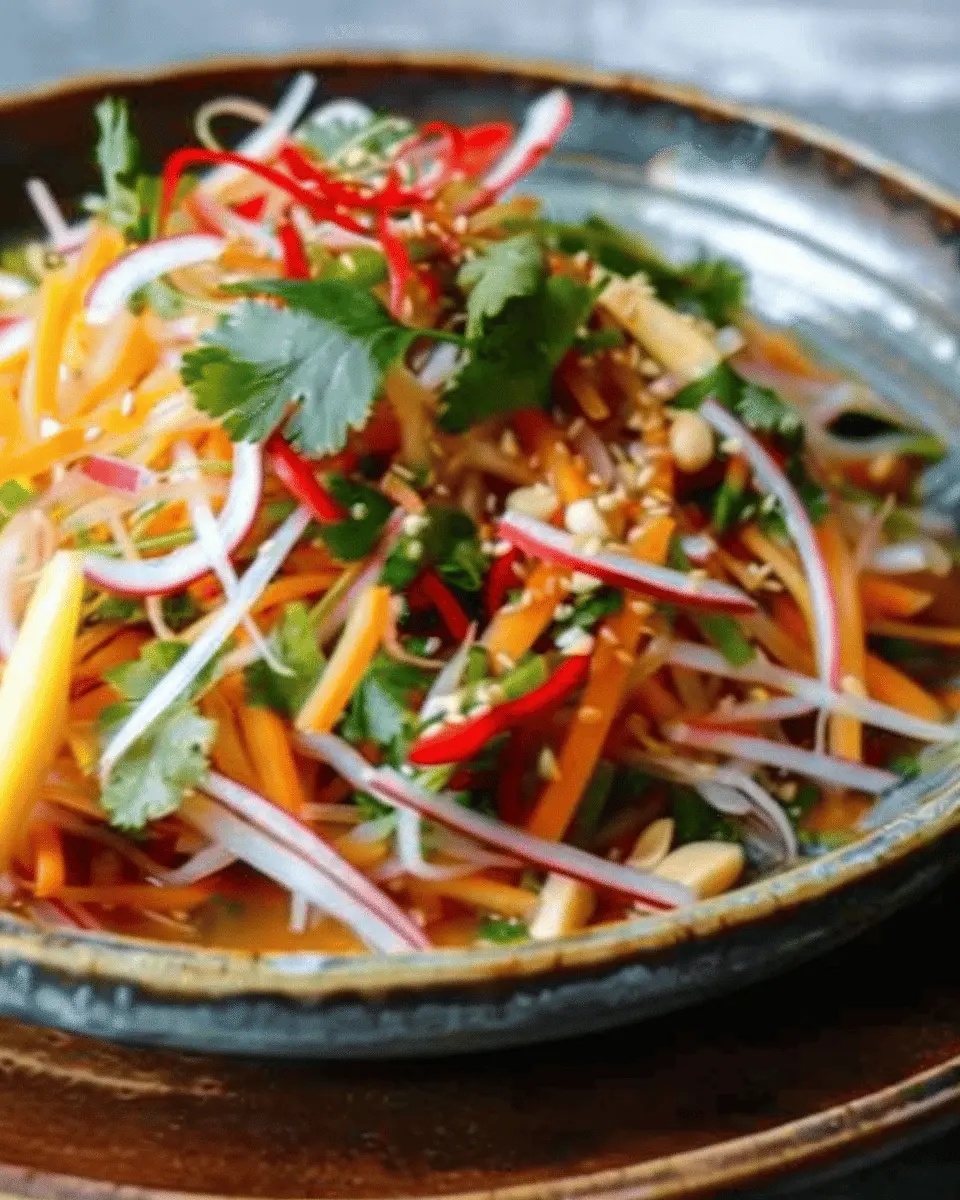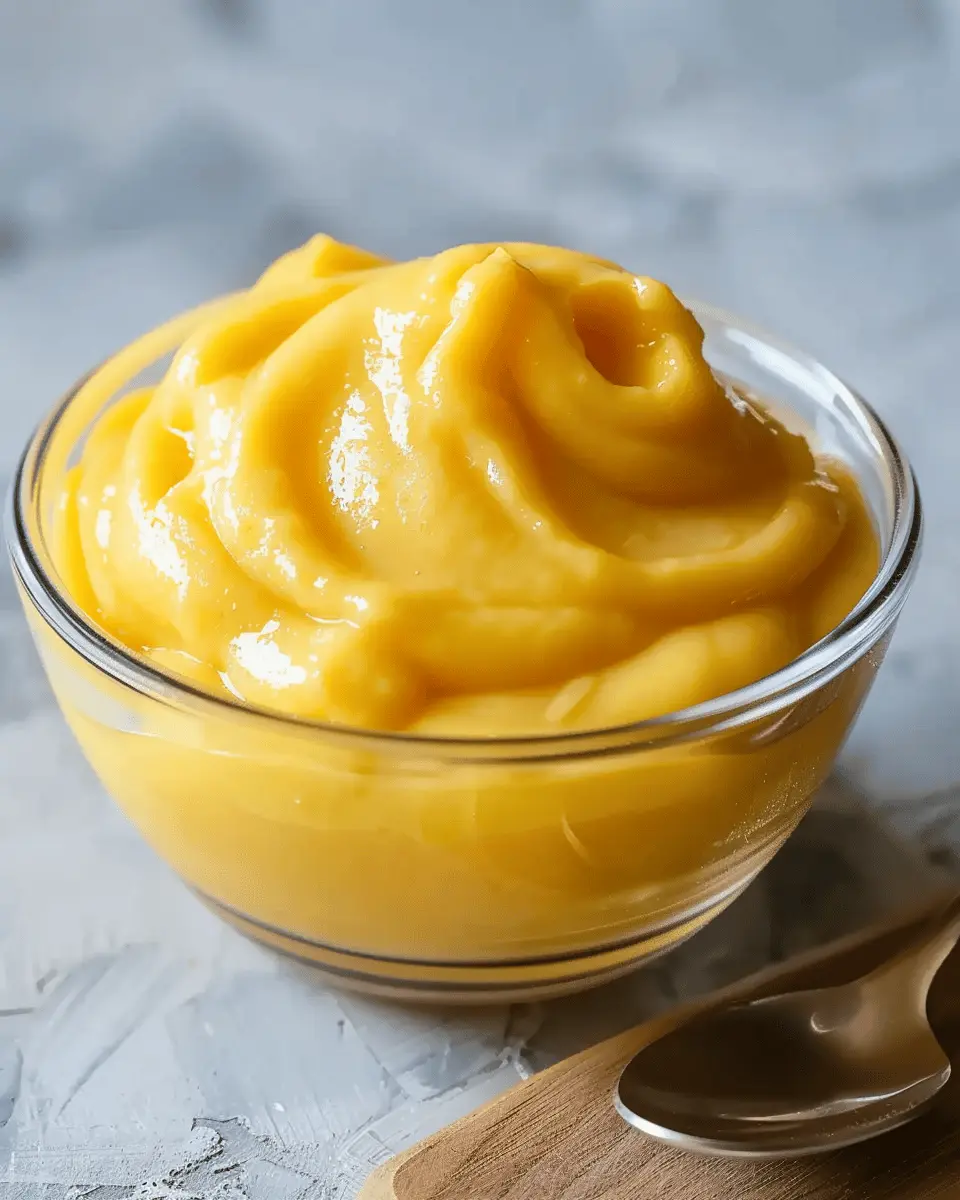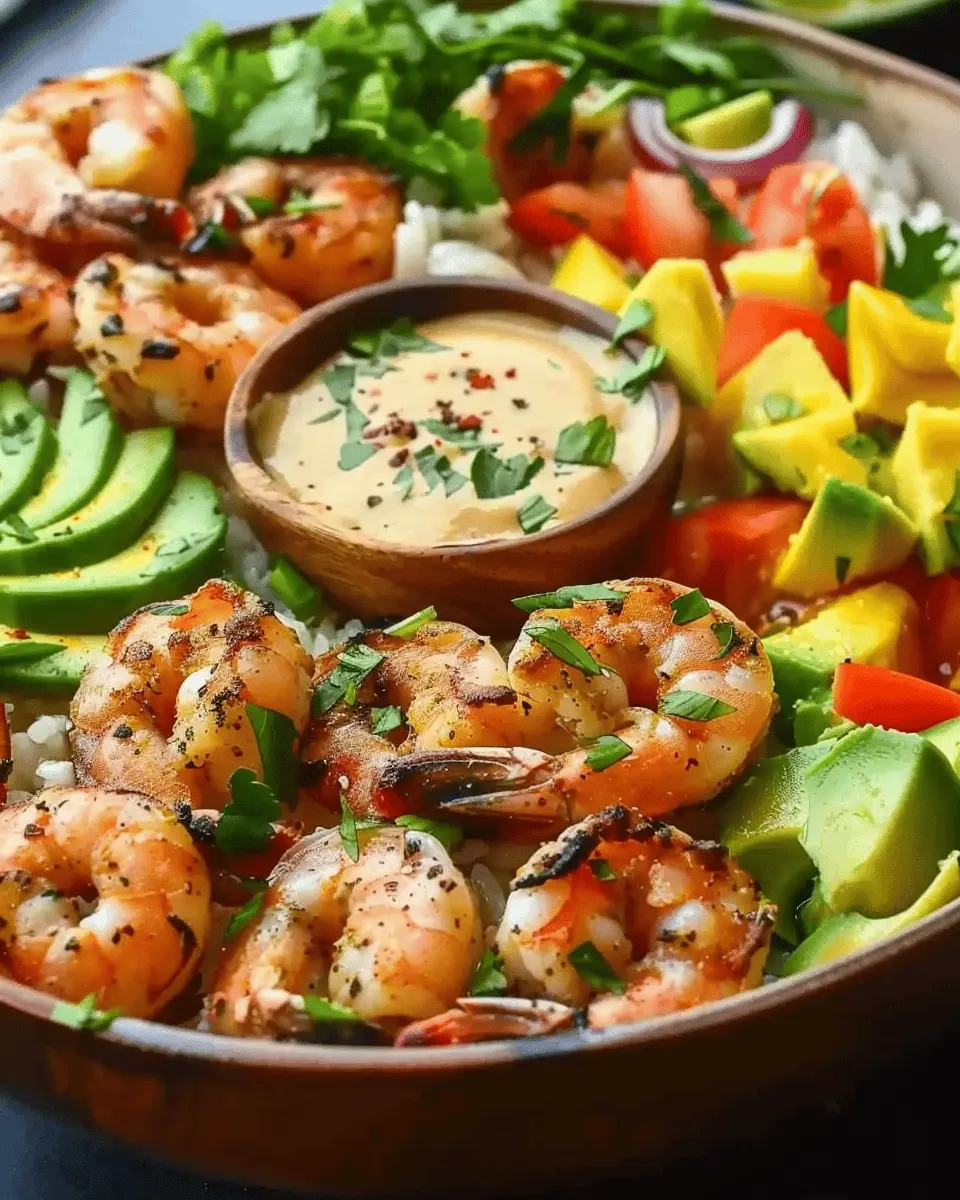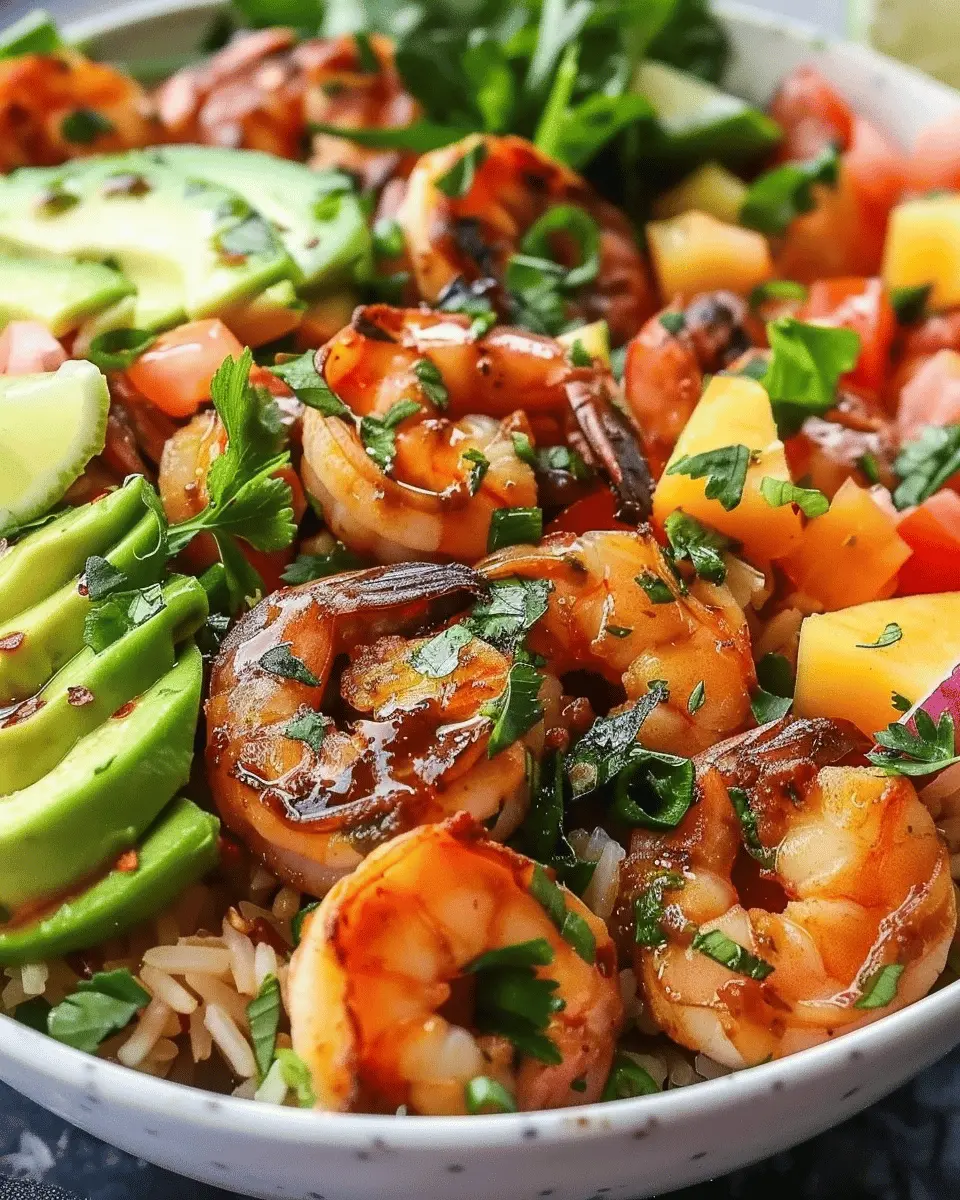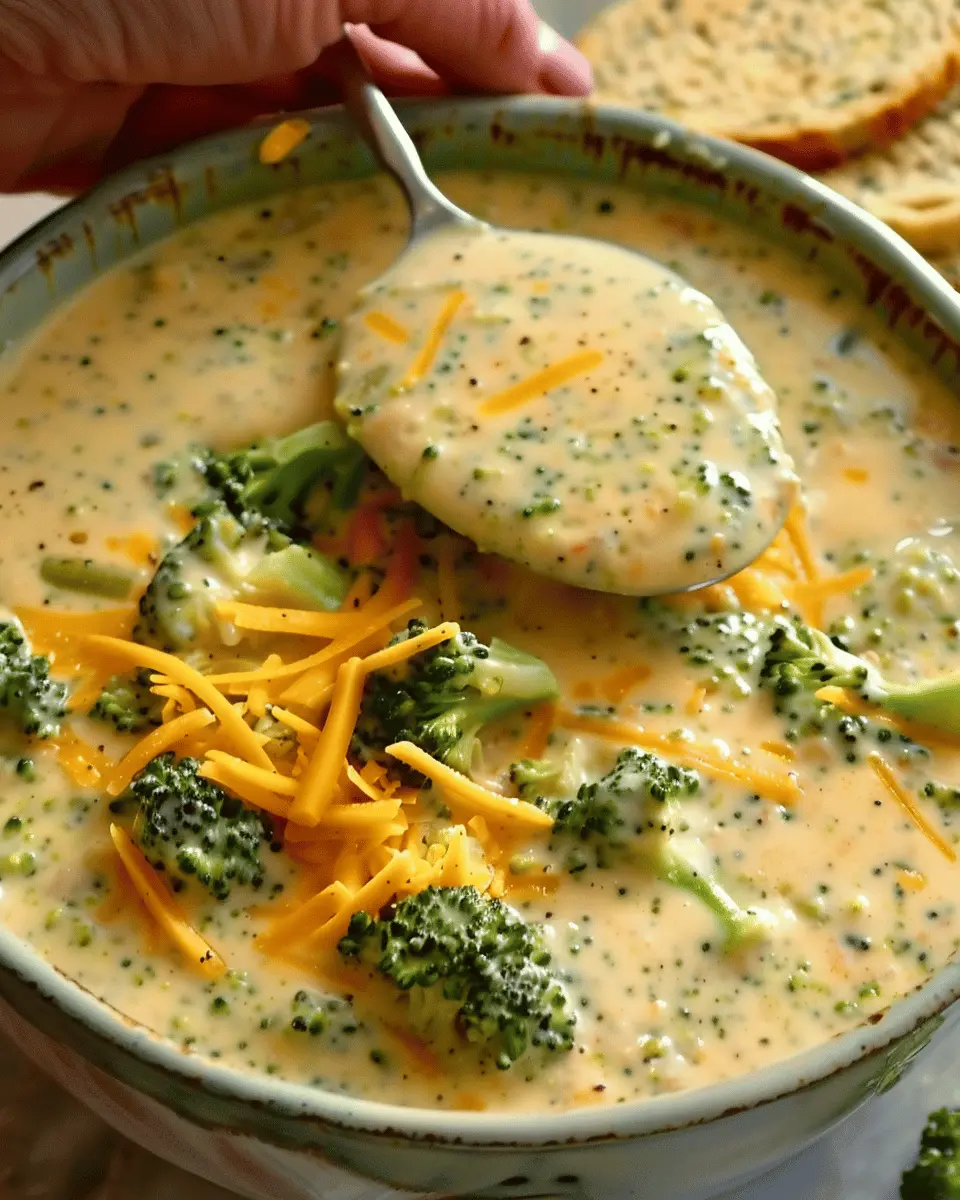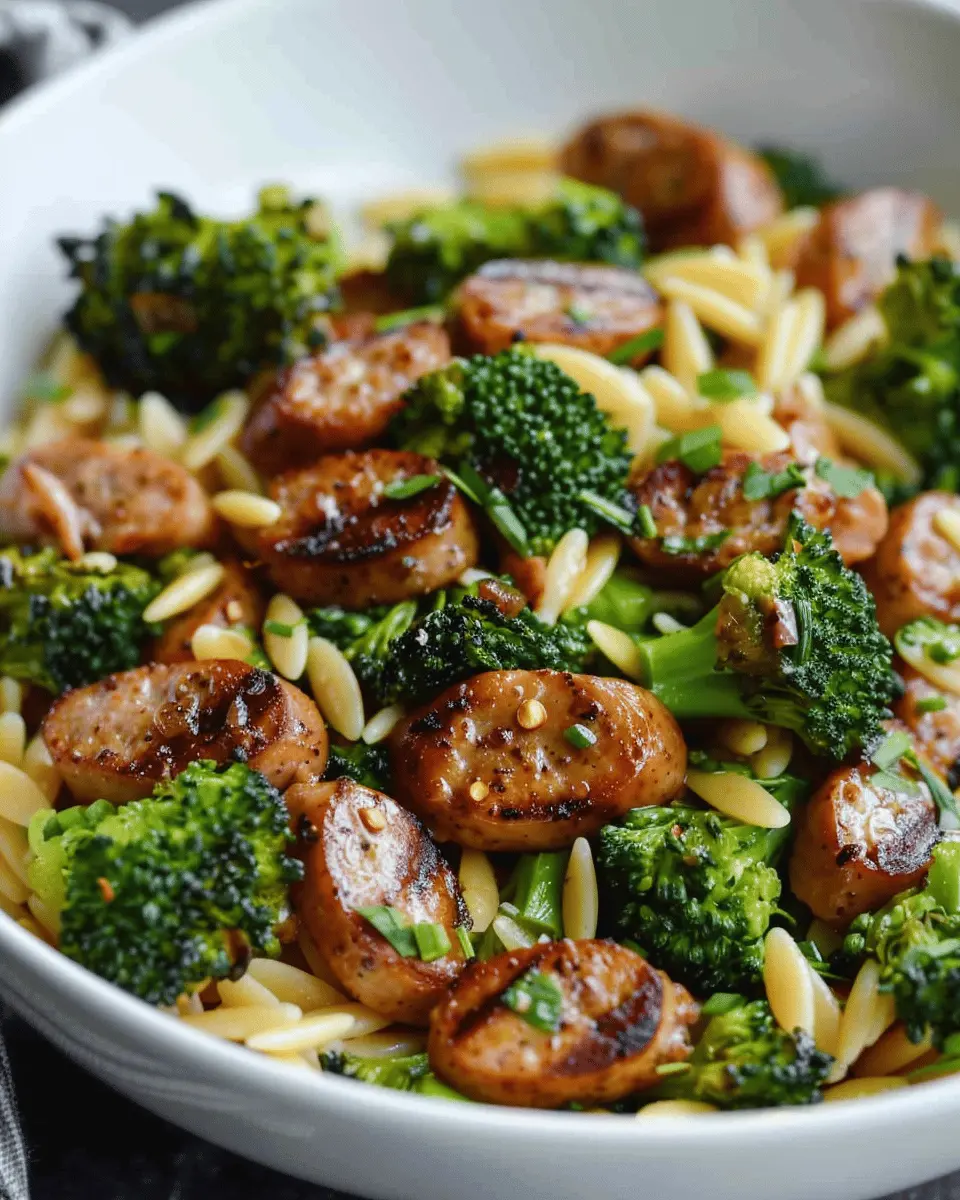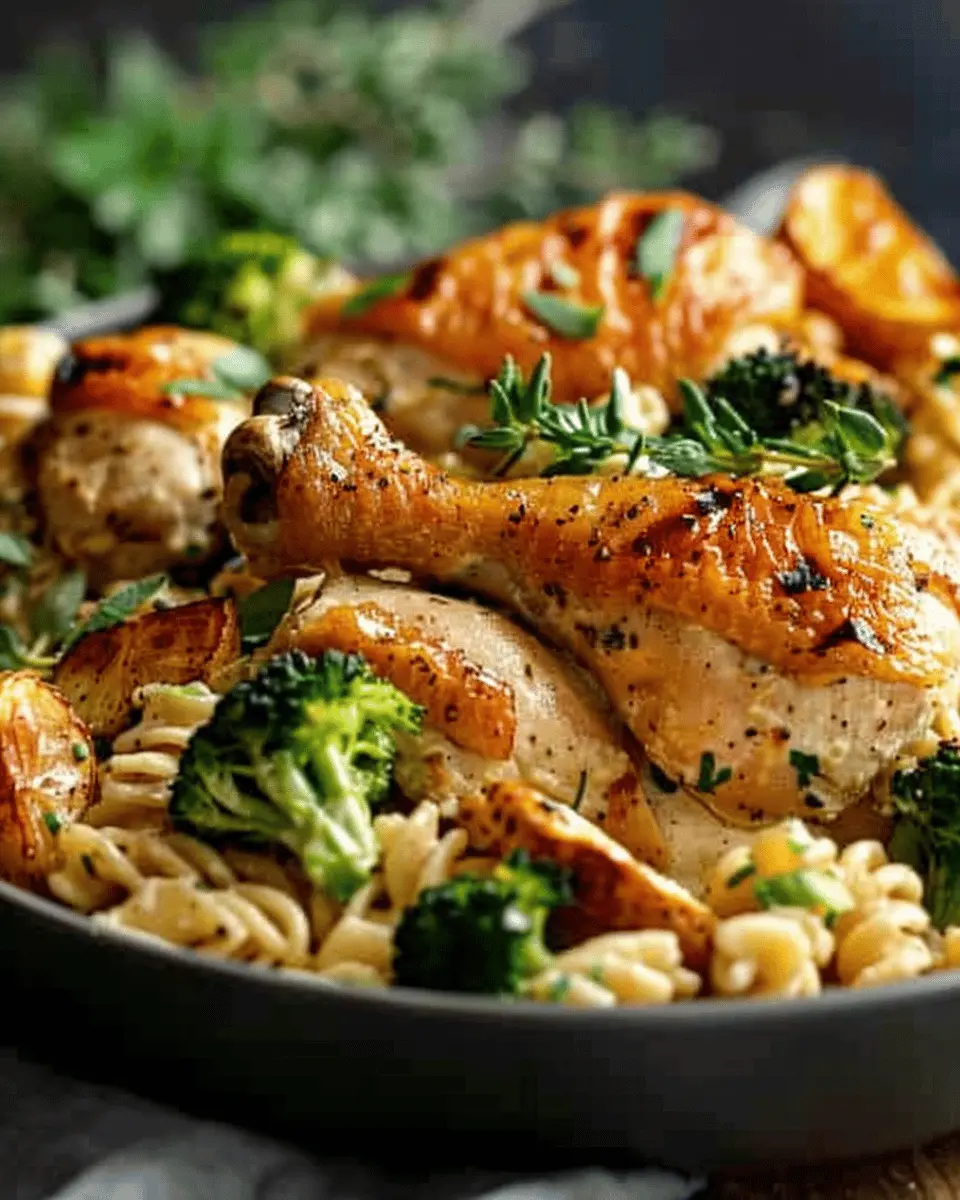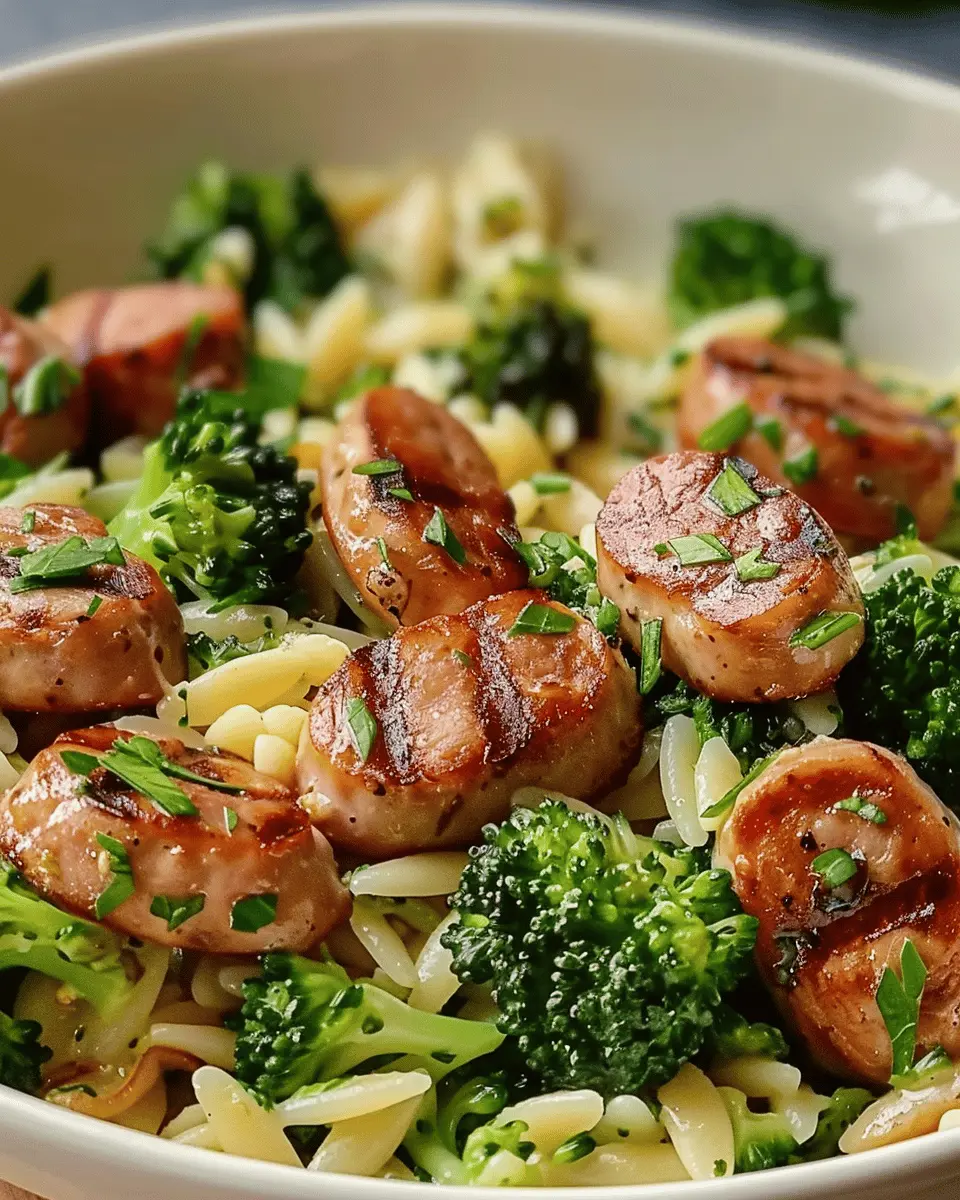Introduction to Pasta Primavera
The Love Affair with Pasta and Vegetables
If you’re someone who loves vibrant flavors and colorful plates, then you likely share a certain affection for Pasta Primavera. This delightful dish, which translates to “spring pasta,” perfectly marries tender pasta with a medley of fresh vegetables. The beauty of Pasta Primavera lies not just in its taste, but also in its versatility. Whether you’re using zucchini, bell peppers, or cherry tomatoes, each choice brings its own character to the dish.
Originating from Italian-American cuisine, Pasta Primavera has evolved over the years. It’s a great example of how a simple dish can encapsulate the freshness of seasonal produce. Research suggests that incorporating more vegetables into your diet can improve health outcomes, making this dish not only delicious but nutritious, too. You can read more about the benefits of eating vegetables in this Harvard Health article.
The approach to making Pasta Primavera encourages creativity. Have you ever glanced at your fridge and discovered a lone carrot, a fading bell pepper, or some spinach? Instead of letting them go to waste, why not toss them into a refreshing pasta dish? This philosophy resonates especially well with young professionals who often aim to balance busy work schedules with healthy eating habits.
When preparing this dish, you’ll find that the key is to use seasonal vegetables. Not only does this add nutrition, but it also boosts flavor. An interesting statistic from the USDA shows that seasonal veggies are often tastier since they’re picked at their peak ripeness. Imagine the crunch of asparagus or the sweetness of peas elevating your pasta experience!
As you explore the world of Pasta Primavera, think of it not just as a meal but as an experience. It’s an opportunity to embrace creativity in the kitchen and a chance to savor the seasonal bounty. What vegetables would you choose for your own take on this classic? The possibilities are endless!
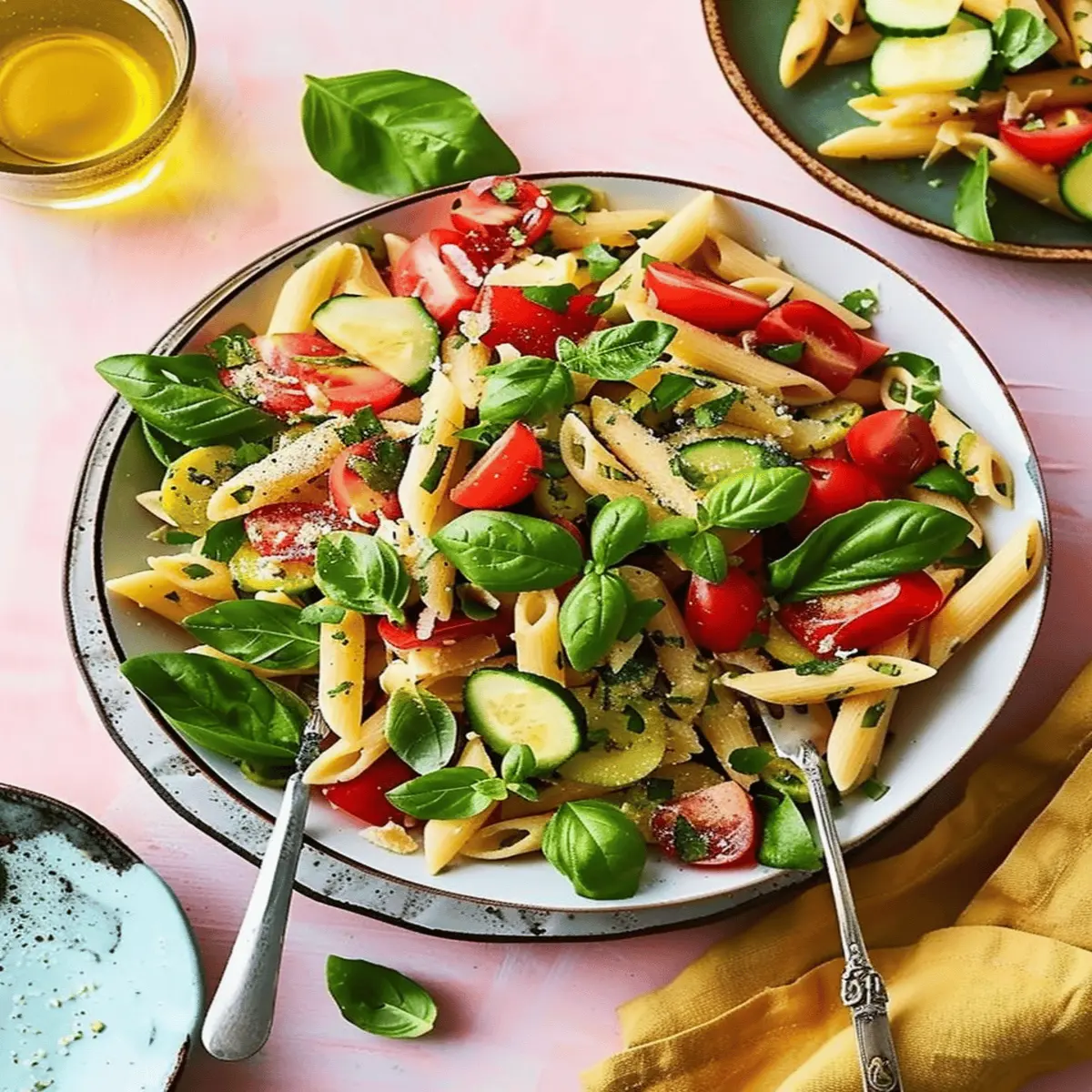
Ingredients for Pasta Primavera
Essential components for a vibrant dish
Creating a delightful Pasta Primavera doesn’t require a Michelin-star chef’s toolkit, but it does benefit from fresh, colorful ingredients that burst with flavor. Here’s what you need to bring this dish to life:
- Pasta: Choose your favorite type—spaghetti, penne, or linguine work well.
- Vegetables: Go for a combination of seasonal veggies like bell peppers, zucchini, cherry tomatoes, asparagus, and broccoli. Not only do they add vibrant colors, but they also provide essential nutrients (check out more on this at Healthline).
- Herbs: Fresh basil and parsley brighten the dish.
- Garlic: A couple of cloves, finely chopped, will elevate the flavor profile.
- Olive Oil: Use high-quality extra virgin for that rich, fruity taste.
- Parmesan Cheese: Freshly grated for serving, because who can resist that cheesy goodness?
- Lemon Juice: A splash adds brightness, balancing the flavors beautifully.
With these ingredients, you’re on your way to whipping up a Pasta Primavera that’s not just good—it’s restaurant-level delicious! Don’t forget to explore seasonal selections at your local farmer’s market to savor the freshest options.
Preparing Pasta Primavera
Pasta Primavera is all about fresh, vibrant vegetables and al dente pasta, making it a perfect dish for those looking to embrace healthy eating without sacrificing flavor. Let’s go through the steps to create this delicious meal that can easily become a weeknight favorite.
Gather all fresh vegetables
Before diving into cooking, take a moment to appreciate the beauty of fresh produce. Think of the colors and textures! For your Pasta Primavera, you’ll want a variety of vegetables. Here’s a quick list to consider:
- Zucchini
- Bell peppers (red, yellow, and/or green)
- Cherry tomatoes
- Snap peas
- Carrots
- Spinach or kale
Using seasonal vegetables can significantly enhance the taste. Check out this handy guide to discover what’s in season. Don’t hesitate to experiment—if you have leftover veggies in your fridge, use those too!
Cook the pasta to al dente
While you’re preparing those beautiful vegetables, bring a large pot of salted water to a boil. The key here is to use enough salt; it should taste like the sea. Bring your pasta to the boil and cook it according to package instructions—but make sure to stop a minute or two before it’s fully cooked. You want your pasta to be al dente, which means firm to the bite. This texture will hold up well when you combine it with the sautéed vegetables and sauce.
When your pasta is done, reserve a cup of the starchy cooking water before you drain it. This water can be a game changer for your final sauce, making it creamy and cohesive.
Sauté the vegetables for peak flavor
Now comes the fun part: sautéing the vegetables! Heat a generous splash of olive oil in a large skillet over medium heat. Add your hardest vegetables first—like carrots and bell peppers—because they need a little more time to soften.
Here’s how you can layer the flavors:
- Start with diced garlic or shallots for a fragrant base.
- Add the carrots and bell peppers, cooking for about 3-4 minutes.
- Next, toss in zucchini and snap peas, cooking for an additional 2-3 minutes.
- Finish with spinach or kale and cherry tomatoes, allowing everything to cook just until the greens wilt and the tomatoes soften.
Want to elevate the flavor even more? Consider adding a splash of white wine or a sprinkle of Italian seasoning. The veggies should be bright, colorful, and perfectly cooked.
Combine pasta and veggies with sauce
Now that your pasta and vegetables are ready, it’s time to bring everything together. Add the drained pasta directly into the skillet with your sautéed vegetables. Pour in your favorite pasta sauce—this can be a light olive oil and garlic sauce, or even a creamy alfredo if you’re feeling indulgent.
Remember that reserved pasta water? Add a little bit of that now to help everything combine and create a silky texture. Toss everything together until the pasta is well-coated and heated through.
Garnish and serve with a flourish
Presentation matters, especially for a dish as colorful as Pasta Primavera! Plate the mixture and consider garnishing with:
- Freshly grated Parmesan cheese
- Chopped basil or parsley
- A squeeze of lemon for brightness
You can even drizzle a little extra virgin olive oil on top for a finishing touch. Don’t forget to step back and admire your creation before serving. Sharing a meal is all about the joy of food, and an inviting presentation sets the mood. Enjoy your culinary masterpiece with friends or prepare it as a delightful treat for yourself!
In just a few steps, you’ve created a delicious and healthy Pasta Primavera that’s not only a feast for the eyes but a delight for the palate. Whether you choose to keep it simple or jazz it up with flavors, the satisfaction of making it from scratch is sure to shine through. Happy cooking!
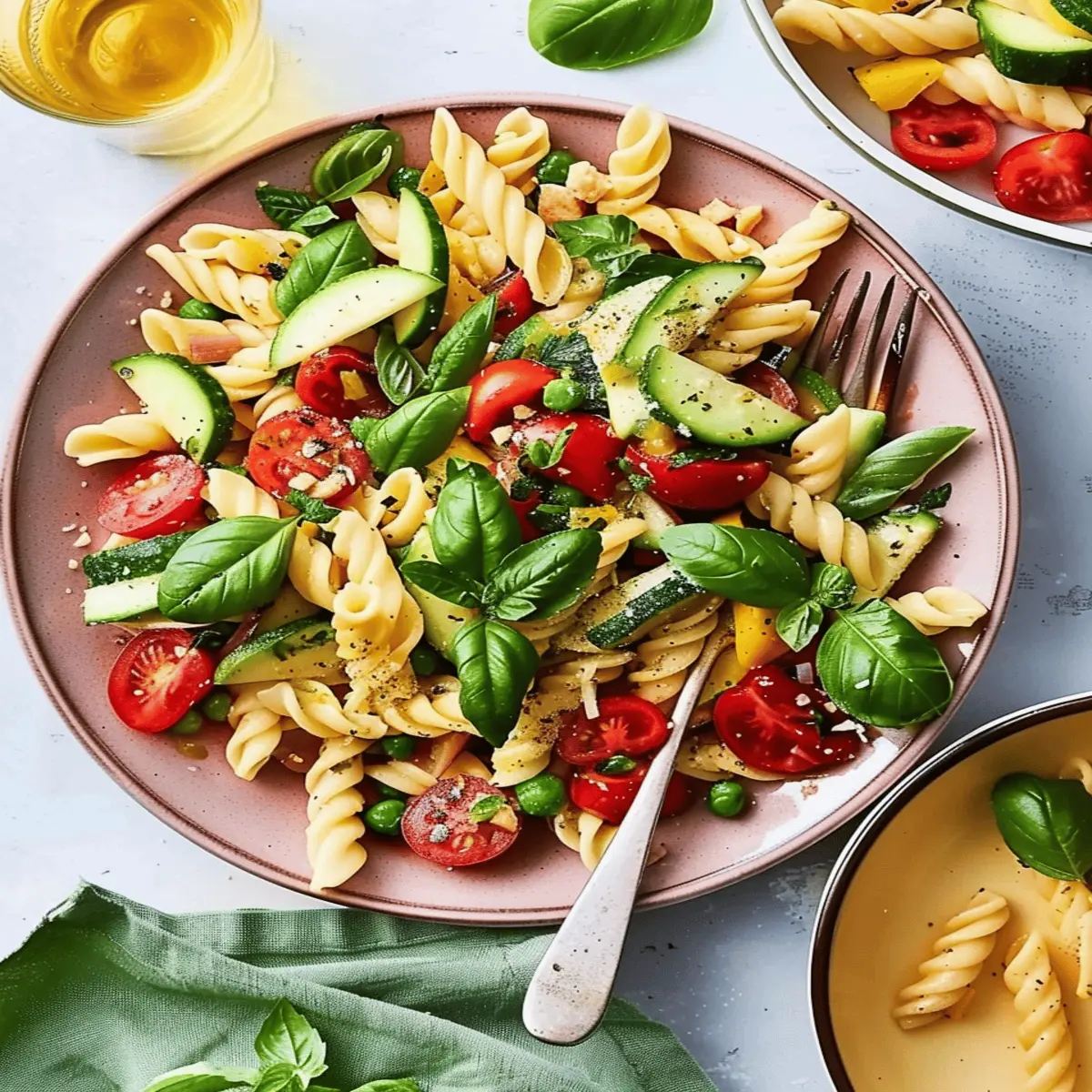
Variations on Pasta Primavera
Creamy Pasta Primavera for Indulgence
If you ever find yourself in the mood for something a bit richer, a creamy Pasta Primavera might be just what you need. Imagine al dente pasta enveloped in a velvety sauce made from a combination of sautéed garlic, butter, and heavy cream. For added flavor, you can toss in some grated Parmigiano-Reggiano or a dollop of mascarpone cheese. Finish it with a sprinkle of fresh basil or parsley, and you’ve transformed a light dish into an indulgent meal.
You can easily customize your creamy delight by incorporating seasonal veggies like asparagus, bell peppers, or cherry tomatoes. Feel free to experiment with your favorite herbs, such as thyme or oregano. Not only does this version satiate your cravings, but it also invites your guests to gather around the table, sharing laughter and stories over a comforting dish.
Vegan Pasta Primavera Loaded with Plant-Based Goodness
For a lighter, more health-conscious option, consider a vegan Pasta Primavera. This version is all about harnessing the vibrant flavors of fresh vegetables without any animal products. Think zoodles (zucchini noodles) or whole grain pasta, tossed with an abundance of colorful veggies like zucchini, bell peppers, and carrots.
Instead of cream, you can use a cashew cream or a generous splash of olive oil to give it that luscious mouthfeel. By incorporating protein-rich ingredients like chickpeas or lentils, you’re not only making it more filling but also loading it with nutrients.
Want some inspiration? Check out Forks Over Knives for delicious plant-based recipes that can help you on your health journey. Who knew Pasta Primavera could be such a canvas for creativity while supporting a healthier lifestyle?
Cooking Notes for Pasta Primavera
Tips for Perfecting the Sauté
To achieve an authentic Pasta Primavera, start with high-quality, seasonal vegetables. Think bell peppers, zucchini, and asparagus for vibrant color and delightful crunch. When sautéing, use a mix of olive oil and butter for that golden, caramelized flavor. Keep your pan hot, but be careful not to overcrowd it—working in batches allows each vegetable to sear beautifully. For an extra layer of flavor, add minced garlic and a pinch of red pepper flakes just before the vegetables are done.
Adjusting Flavors and Textures
Creating the perfect Pasta Primavera is as much about balance as it is about ingredients. Taste your dish as you go. If it feels flat, a splash of lemon juice can brighten things up, while a sprinkle of Parmesan adds richness. For creaminess, consider tossing in a dollop of mascarpone or cream at the end. Remember, you want a medley of textures—crisp, tender, and al dente. As you mix it all, don’t shy away from experimenting with herbs like basil or parsley—freshness is key!
For more sautéing tips, check out Serious Eats and Cook’s Illustrated for expert insights.
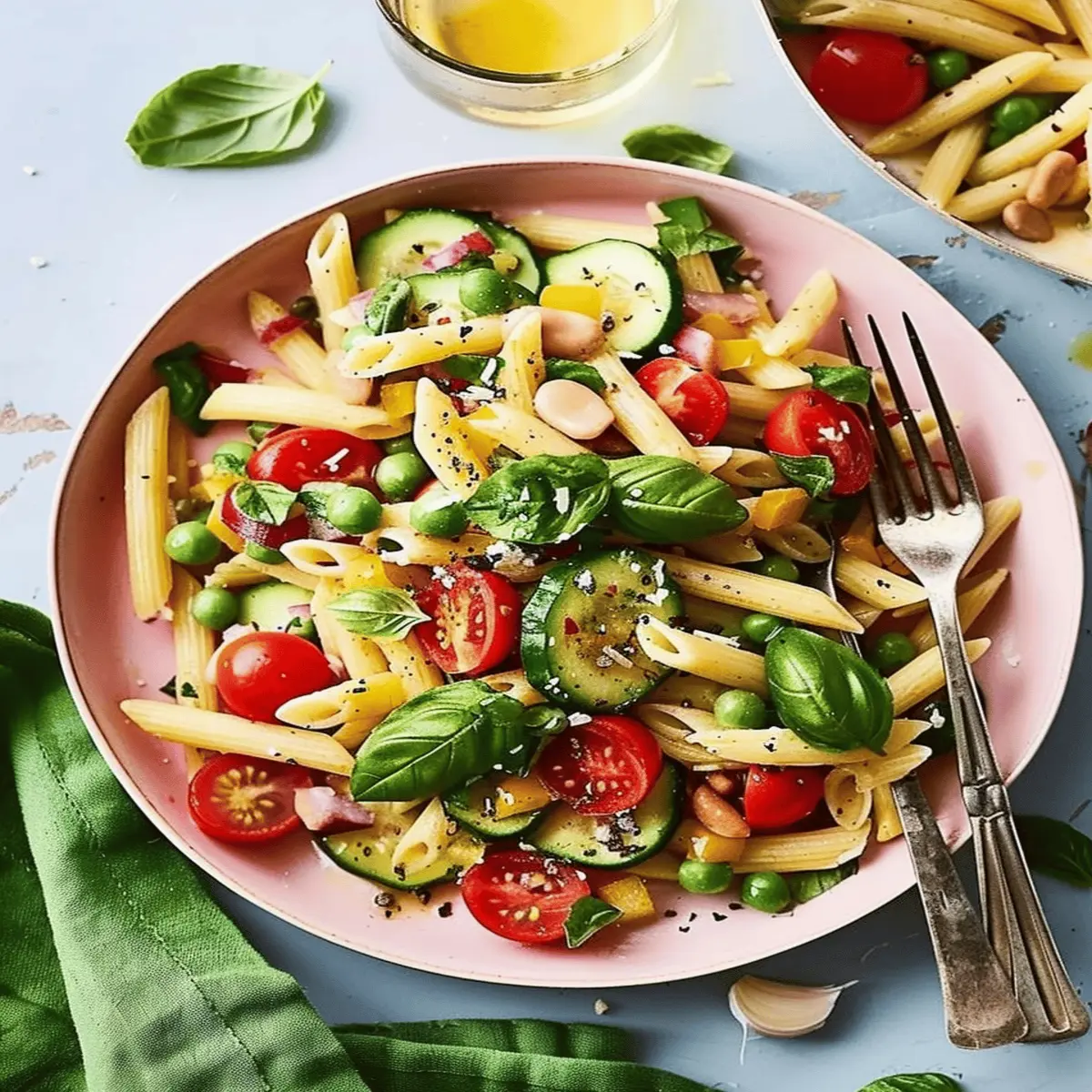
Serving suggestions for Pasta Primavera
Pairing with proteins
To elevate your Pasta Primavera experience, consider pairing it with some well-chosen proteins. Grilled chicken or shrimp adds a lovely touch, both in flavor and texture. You can also opt for roasted chickpeas for a delicious vegetarian option packed with protein. If you’re in the mood for something different, try seared scallops—these will take your dish to a whole new level.
For more ideas on protein pairings, check out this detailed guide on complementary flavors, which can inspire your culinary experiments.
Choosing complementary sides
Complementing your Pasta Primavera with sides can really enhance your dining experience. A light arugula salad dressed in balsamic vinaigrette not only adds a peppery zest but also balances the richness of the pasta. Grilled or roasted vegetables, such as asparagus or bell peppers, can further amplify the dish’s freshness. And don’t underestimate a good slice of garlic bread—perfect for soaking up all that delicious sauce!
By being creative with your pairings, you can make your mealtime feel special and satisfying. Happy cooking!
Time breakdown for Pasta Primavera
Preparation time
Getting started with Pasta Primavera is a breeze. You’ll spend about 15 minutes prepping your ingredients. This is the perfect time to chop your veggies and measure out your pasta. Trust me, having everything ready to go makes the cooking process a lot smoother!
Cooking time
Once you’re all set, cooking your Pasta Primavera will take around 20 minutes. You’ll boil the pasta while sautéing your colorful veggies—it’s a symphony of flavors developing right on your stovetop!
Total time
In total, you’re looking at about 35 minutes from start to finish. That’s pretty quick for a delicious and nutritious meal! With this simple breakdown, you can easily fit Pasta Primavera into a busy weeknight dinner. For additional tips on how to chop vegetables quickly, check out this helpful guide for some shortcuts!
Nutritional facts for Pasta Primavera
When it comes to Pasta Primavera, understanding its nutritional profile can help you make informed choices.
Calories and key nutrients
A typical serving of Pasta Primavera is around 300-400 calories, depending on the portion size and ingredients used. This dish is rich in:
- Carbohydrates: A great source of energy.
- Fiber: Thanks to the veggies, it can help with digestive health.
- Vitamins: Particularly Vitamin C and folate from colorful vegetables like bell peppers and broccoli.
For a deeper dive into the nutritional benefits of pasta, consider checking out Healthline’s article on pasta nutrition.
Benefits of including veggies
One of the best features of Pasta Primavera is its abundance of vegetables. Including a variety of veggies can:
- Boost your daily intake of essential vitamins and minerals.
- Provide antioxidants that may reduce the risk of chronic diseases.
- Add natural flavors, minimizing the need for added fats or sugars.
Integrating more vegetables into your meals is supported by numerous studies, emphasizing the positive impact they have on health. Want to read more on this subject? The American Heart Association has great resources about the health benefits of fruits and vegetables.
So, next time you whip up a delicious Pasta Primavera, remember that it’s not just tasty; it’s a nutritional powerhouse too!
FAQs about Pasta Primavera
Can I use frozen vegetables?
Absolutely! Using frozen vegetables is a great time-saver and can be just as nutritious as fresh ones. In fact, veggies like peas, carrots, and bell peppers are often frozen at their peak ripeness, locking in flavor and nutrients. Just be sure to sauté them lightly before adding them to your Pasta Primavera to ensure they maintain a pleasant texture. If you’re curious about how frozen produce stacks up against fresh, check out this informative article.
What pasta types work best for primavera?
When it comes to Pasta Primavera, you have plenty of delicious options! Classic choices include:
- Fettuccine: Its flat shape holds onto the sauce beautifully.
- Penne: The tubes capture the sauce and bits of veggies delightfully.
- Whole wheat pasta: For a healthier twist, providing more fiber and nutrients.
Feel free to experiment with gluten-free options like chickpea or lentil pasta, which can add a fun twist to your dish.
How can I make pasta primavera gluten-free?
Making Pasta Primavera gluten-free is a breeze! Start with gluten-free pasta, which is widely available in grocery stores. For extra texture and a unique flavor, consider using spiralized vegetables such as zucchini or sweet potatoes as a base. You can also replace traditional sauces with a simple olive oil and garlic mixture, which keeps the dish fresh and vibrant. If you’re looking for a comprehensive guide on gluten-free cooking, you might find this resource helpful.
Remember, the key to a great Pasta Primavera lies in using fresh, seasonal vegetables, so let your creativity run wild! Enjoy!
Conclusion on Pasta Primavera
Wrapping up the delicious journey
As we conclude our culinary adventure with Pasta Primavera, it’s clear that this dish offers more than just a meal—it’s a colorful celebration of fresh veggies and vibrant flavors. Whether you’re a seasoned cook or a busy professional, making this recipe is a delightful way to embrace seasonal produce and practice healthy eating.
So, next time you crave something quick yet bursting with taste, consider whipping up Pasta Primavera. Remember, the beauty of this dish lies in its versatility; you can swap in your favorite vegetables or even add a protein for a twist! For more cooking tips, check out Cooking Light for inspiration, and don’t forget to share your creations on social media or with friends. Happy cooking!
PrintPasta Primavera: The Best Fresh Flavor Boost for Dinner!
A delightful dish loaded with fresh vegetables and vibrant flavors.
- Prep Time: 15 minutes
- Cook Time: 15 minutes
- Total Time: 30 minutes
- Yield: 4 servings 1x
- Category: Main Dish
- Method: Stovetop
- Cuisine: Italian
- Diet: Vegetarian
Ingredients
- 8 ounces pasta
- 1 cup cherry tomatoes, halved
- 1 cup bell peppers, sliced
- 1 cup zucchini, sliced
- 1 cup broccoli florets
- 2 tablespoons olive oil
- 2 cloves garlic, minced
- 1/2 teaspoon salt
- 1/4 teaspoon black pepper
- 1/4 cup grated Parmesan cheese
Instructions
- Cook the pasta according to package instructions until al dente.
- In a large skillet, heat olive oil over medium heat.
- Add garlic and sauté for 1 minute.
- Stir in the cherry tomatoes, bell peppers, zucchini, and broccoli.
- Sauté the vegetables until tender, about 5-7 minutes.
- Add the cooked pasta to the skillet and toss to combine.
- Season with salt and black pepper.
- Sprinkle with Parmesan cheese before serving.
Notes
- For added flavor, consider adding fresh herbs like basil or parsley.
- This dish can be served hot or cold.
Nutrition
- Serving Size: 1 plate
- Calories: 350
- Sugar: 2g
- Sodium: 300mg
- Fat: 14g
- Saturated Fat: 2g
- Unsaturated Fat: 10g
- Trans Fat: 0g
- Carbohydrates: 45g
- Fiber: 5g
- Protein: 12g
- Cholesterol: 5mg
Keywords: Pasta Primavera, fresh vegetables, vegetarian dinner

